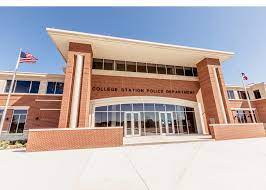In the upcoming days, the city is planning on hosting another “Dialogue for Peace and Progress,” a local version of the National Night Out and a library exhibit focusing on vaqueros, the precursor of the American cowboy.
The planned 90-minute Dialogue event — this one in conjunction with Hispanic Heritage Month — is scheduled for Friday, beginning at 7 p.m. at City Hall. It can also be viewed live on the city’s cable channel, its YouTube channel and it’s Facebook page. Panelists include Dr. Claude Bonazzo-Romaguera, a sociology lecturer at Texas State University; Rubén Castañeda, an adjunct professor at University of Texas at Austin Law School; Marcelina Rodriguez Garcia, the author of A Portrait of Mexican American Civil Rights in South Texas: 1930-1979: Legacies of a People, a book that explored how South Texas communities organized to bring about positive social, economic, and political change to Hispanics involved in agricultural labor after decades of segregation, discrimination, labor oppression, and poverty; and Angie Villescaz, a 2018 Democratic candidate who challenged then Republic incumbent Will Hurd for the 23rd Congressional District.
As always, city council member Dex Ellison, who created the dialogues, will be the moderator.
“In conjunction with Hispanic Heritage Month, the Dialogues for Peace and Progress will serve as a platform for open and honest conversations regarding significant issues faced by Hispanic and Latino individuals, but also to celebrate the accomplishments, heritage and culture of the Hispanic community,” Ellison said in a prepared statement. “We are immensely grateful to our panelists for taking the time to speak to us about their experiences and share how the City of Kyle can work to recognize Hispanic and Latino communities.”
The Kyle Police Department and the Kyle Citizen’s Police Academy Alumni Association will be co-hosting the city’s National Night Out event from 6 to 9 p.m., Oct. 5, at the Kyle/Buda VFW Post #12058, 103 S. Front St. The Police Department is also encouraging community members to celebrate National Night Out by hosting parties in their own neighborhoods to enhance the relationship between the community and law enforcement, the city said in a statement issued Friday.
“We believe National Night Out is a great way to facilitate and promote heathy police-community relations,” Kyle Police Department Officer James Plant, who is heading up the city’s National Night Out program, said in the city’s statement. “This event not only creates a sense of camaraderie between the police and citizens but also allows residents to build positive relationships with each other.”
Residents planning to host their own National Night Out event can register it with the Kyle Police Department by completing and filing the form that can be found by clicking here anytime before 5 p.m. Thursday. Registering allows law enforcement to know the location of the party and send police, firefighters and EMS to join the celebrations.
A vaquero is a horse-mounted livestock herder of a tradition that originated on the Iberian Peninsula and extensively developed in Mexico from a methodology brought to Latin America from Spain. The vaquero became the foundation for the North American cowboy. The vaqueros of the Americas were the horsemen and cattle herders of New Spain, who first came to California with the Jesuit priest Eusebio Kino in 1687, and later with expeditions in 1769 and the Juan Bautista de Anza expedition in 1774. They were the first cowboys in the region.
The Kyle Public Library is hosting through Oct. 13 an exhibition called “Vaquero: Genesis of the Texas Cowboy,” created by the Wittliff Collections at the Texas State University Alkek Library in-San Marcos.
In the early 1970s, Texas historian Joe Frantz offered Bill Wittliff the opportunity to visit a ranch in northern Mexico where the vaqueros still worked cattle in traditional ways. Wittliff photographed the vaqueros as they went about their daily chores that had changed little since those 16th century Mexican cow-herders. Wittliff captured a way of life that can be glimpsed through the 62 digital carbon prints and bilingual narrative text included in this exhibition.



